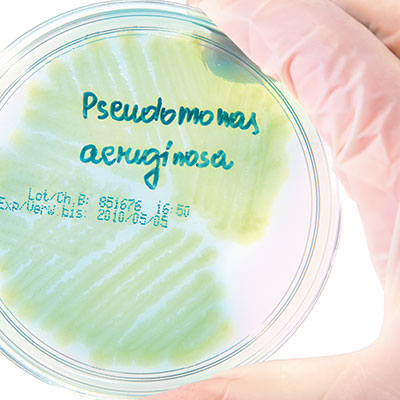
Pseudomonas aeruginosa is the third most common source of healthcare-related infections.
Unlike Legionella pneumophila, this germ has few nutritional requirements because it is able to use carbon sources. It needs two factors to develop:
- water at a temperature between 40°F and 108°F, with optimum proliferation between 86°F and 99°F,
- the ability to carry out oxidation.
Pseudomonas aeruginosa is mostly transmitted by hand by healthcare staff and through infected medical equipment. It can also spread via aerosols from the shower. Invasive surgery also presents a higher risk of transmission of this type of infectious agent.
Infections are very varied (respiratory, urinary, dermatological, septicemia, etc.) with serious consequences (50% mortality for highly vulnerable patients in intensive care), specifically due to their very high resistance to antibiotics.



